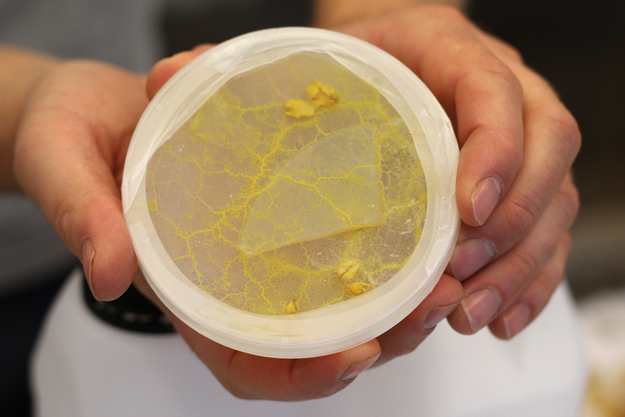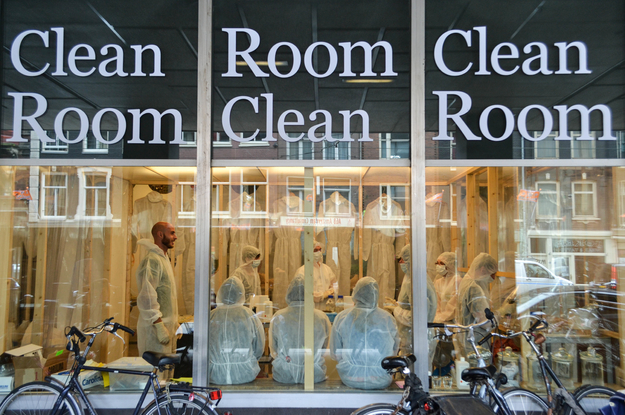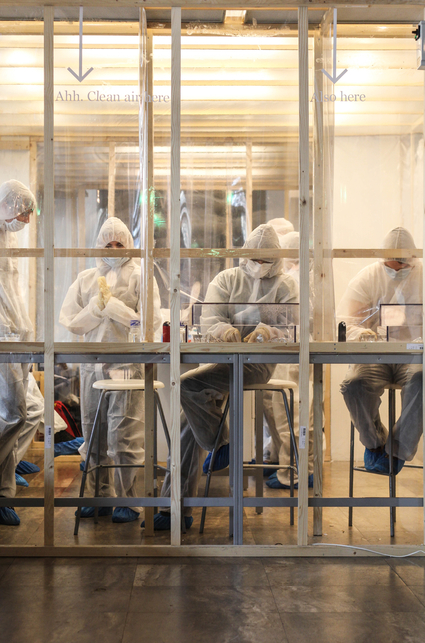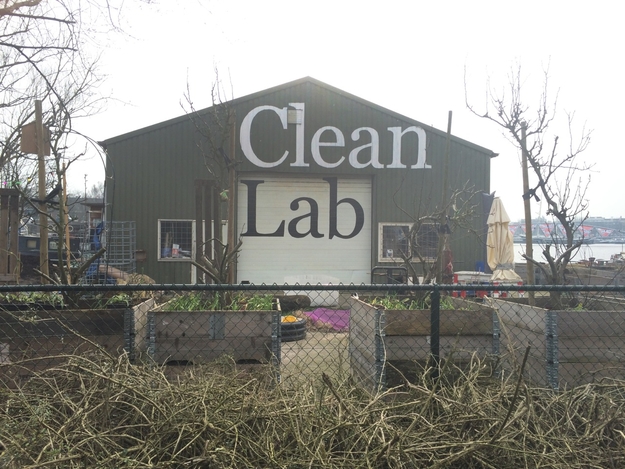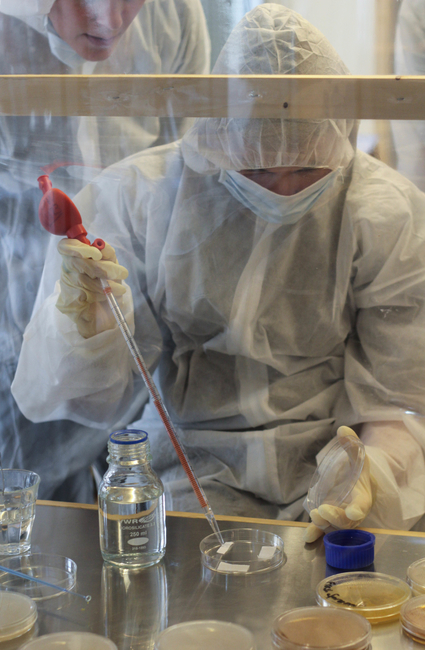Slime-molds
Slime-molds are neither plants nor animals; their development cycle is unique. At the University of West-England, researchers constructed an agar-map of the UK by placing oat flakes according to the geographical locations of the nine most populous cities in the UK. After introducing a slime-mold colony to the map, the organism started developing patterns which, surprisingly, aligned with the existing motorway design; however, with some variations.
Re-explore and re-map Amsterdam - At the Bio Data Visualisation Workshop.
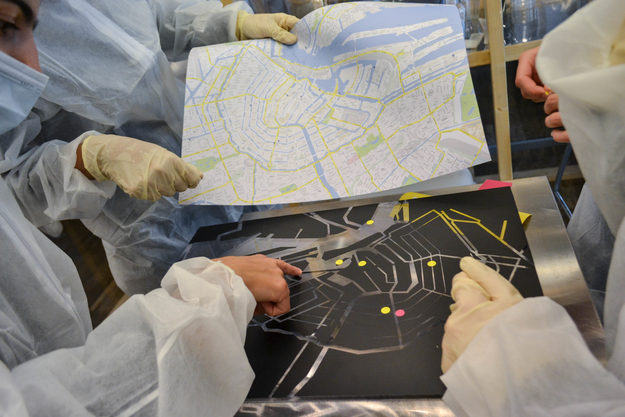
A similar experiment was conducted in Tokyo and resulted in a near-duplicate of the Tokyo railway network. In 2000 the same research team proved that slime-mold could find the shortest path to connect two food sources. (Their work won an Ig Nobel prize.) In short, slime-mold has proven to be an incredible organism that understands complex networks and can solve bottleneck issues. Nevertheless, the scientific knowledge about this organism is still limited and further explorations are needed to reveal its true capacities.
The workshop
Pretty soon Mediamatic will be moving shop. Our new home, Mediamatic Fabriek, is located in an old shipping yard, in the midst of tiny canals, residential homes, bike-only paths, and train tracks. An exciting place, but difficult to get to if you've never been there before. So we figured we'd employ the slime-mold to map out the most efficient and exciting routes to the Fabriek, and include it in a larger network of other cultural hubs in the city. An organic map of Amsterdam's cultural life in slime, if you will.
Explanations by Maurizio Montalti - At the Bio Data Visualisation Workshop.
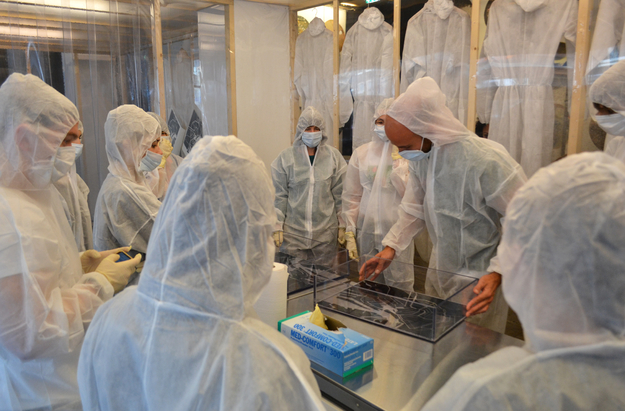
We will collectively and strategically develop a playground for the slime-mold to grow. We will do this by creating a living-map with agar and filter paper. Oat-flakes will be placed on the map referencing the locations of museums, galleries and cafes. After setting the experiment its evolution will be continuously monitored and documented, as it will take a few days for the slime-mold to grow. What new routes and connections will the slime-mold reveal? How will it reshape our city?
More information
The workshop takes place in Mediamatic Bank on Wednesday afternoon June 13 from 13.15 to 17.30. Doors will open at 13.00. We encourage participants to bring in own material they'd like to experiment with as well. Tickets are € 25 incl. VAT. Buy your ticket by clicking 'buy a ticket or 'koop een kaartje' at the top of this page. For questions you can contact Deborah Meibergen.
